Fix: Google Docs Not Working
Google Docs is a word processor included as a part of the free web-based software offered by Google. The software allows users to create and edit word files while collaborating with other users online. Google Docs is available as a web service and as a mobile application for IOS and Android. Also, the application is compatible with Microsoft Office file formats.
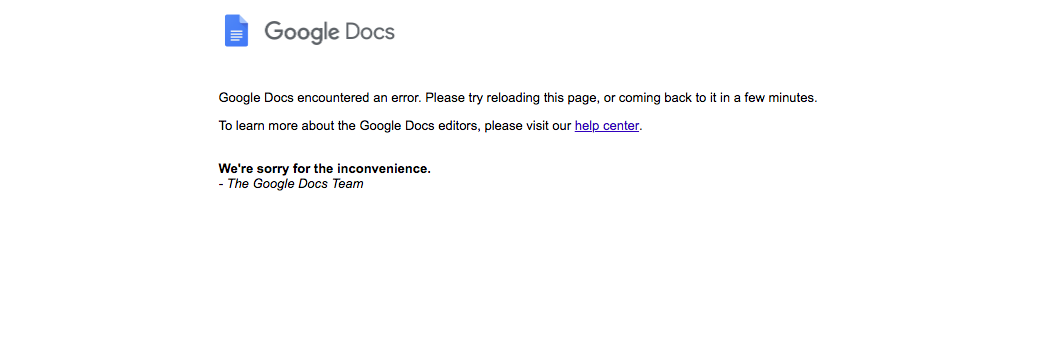
However, quite recently a lot of users have reported of the application not working correctly and displaying the error “Google Docs encountered an error. Please try reloading this page“. In this article, we will discuss some of the reasons due to which this error can be triggered and provide you with viable solutions in order to ensure complete eradication of the error.
What Causes Google Docs to Stop Working?
The error can be triggered due to a lot of reasons some of which are:
- Cache and Cookies: Caches and Cookies are stored by the browser in order to decrease the application loading times and also the site loading times. But sometimes they can get corrupted and cause issues with loading certain sites.
- Extensions: Sometimes, certain plugins or extensions can interfere with the browser while loading a site and therefore cause the issue.
- Software: In some cases, certain software on your computer can interfere with the browser and cause issues in loading certain websites thus causing issues with the loading of the Google Docs site.
- Browser: Sometimes, a certain browser might be facing issues connecting to the site due to any bug with the browser. Also, the site might be experiencing trouble loading on a specific browser.
- Firewall: It is also possible that the Windows firewall might be interfering with your browser and preventing it from connecting to certain websites.
Now that you have a basic understanding of the nature of the problem we will move on towards the solutions.
Solution 1: Clearing Cache and Cookies.
Caches and Cookies are stored by the browser in order to decrease the application loading times and also the site loading times. But sometimes they can get corrupted and cause issues with loading certain sites. Therefore, in this step, we are going to be deleting the cache and cookies for your browser.
For Chrome:
- Open Chrome on your computer and click on the “More button” on the top right.

Menu button - Select “More tools” from the list and click on “Clear Browsing Data“.
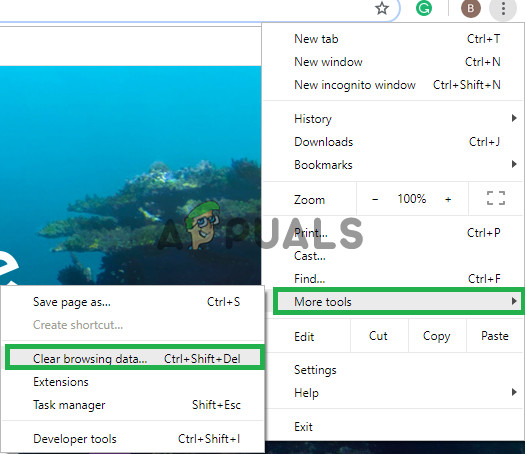
Clearing browsing data - This will open up a new tab, select “Advanced” in the new tab.
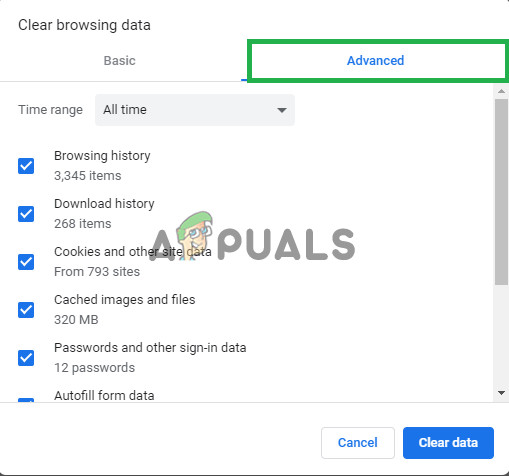
Selecting the advanced tab - Select “All time” as the time range, and check all the boxes.
- Click on “Clear Data”.
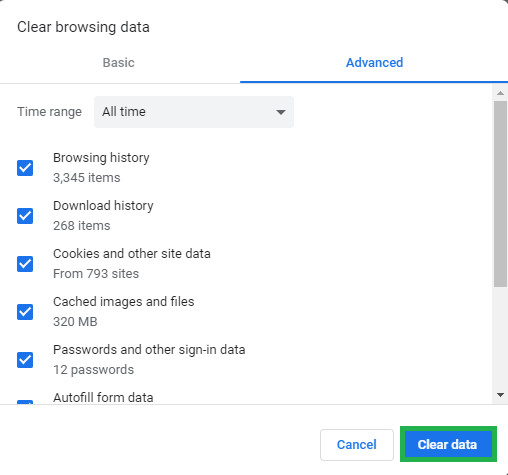
Clicking on clear data
For Firefox:
- Click on the Menu button on the top right corner.
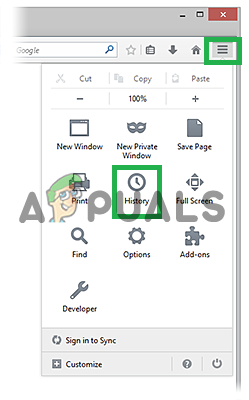
- In the History menu, select “Clear History”
Note: Press “alt” if the menu bar is hidden - In the “Time range to clear” dropdown menu, select “All time”
- Select all the options below.
- Click on “Clear Now” to clear your cookies and cache.
For Microsoft Edge:
- Click on the star with three horizontal lines on the top right side.

the star button - Click on “history” on the right pane.
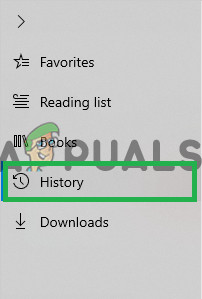
Clicking on history - Select the “Clear History” button on the top of the pane.

Clicking on Clear history - Check all the boxes and select “Clear”
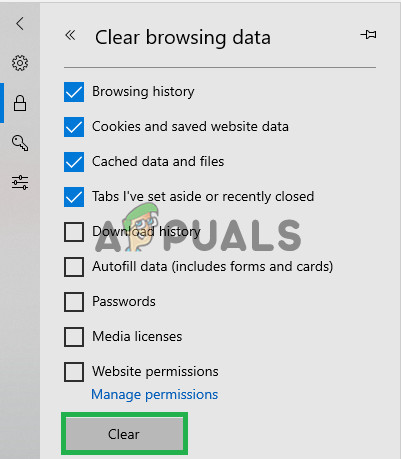
Clearing history
Note: If you are using a different browser you can check this information on their support site.
Solution 2: Disable Extensions.
Sometimes, certain plugins or extensions can interfere with the browser while loading a site and therefore cause the issue. In this step, we are going to be disabling all the extensions on our browser to make sure that no extension is interfering with the browser.
For Chrome:
- Click on the “More” icon on the top right.

Menu button - Select “More tools” and click on “Extensions” in the list.
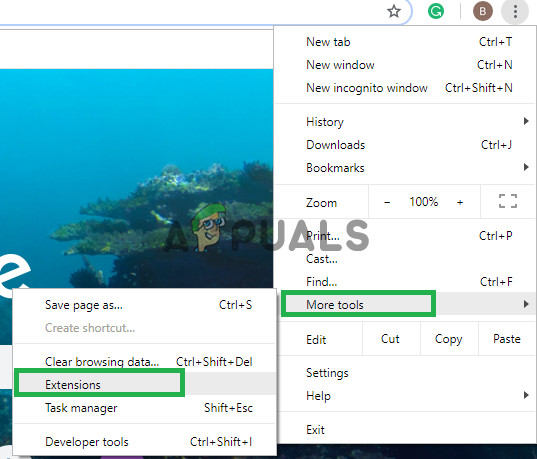
Opening Extension Settings. - Now turn off every extension that is active except for the “Google Docs Offline” one.

Disabling Extensions
For Firefox:
- Click on the Menu icon on the top right side.
- Select the “Add-On” options from the list.
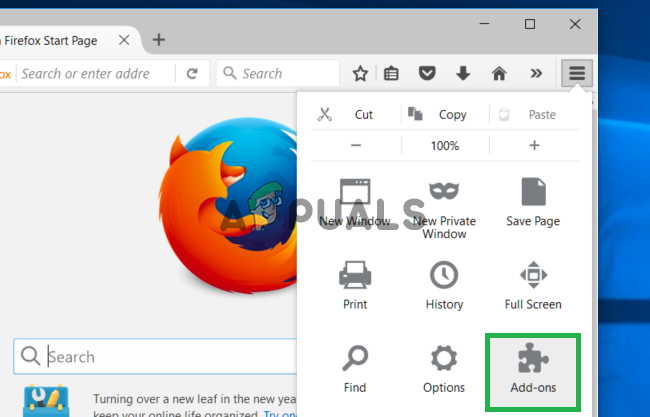
Clicking on Add-ons - Click on the “Extensions” button on the left.
- Now select all the Extensions one after the other and click on “Disable“.
For Microsoft Edge:
- Click on the Menu button on the top right corner.

clicking on the menu button - Click on “Extensions” from the drop–down.
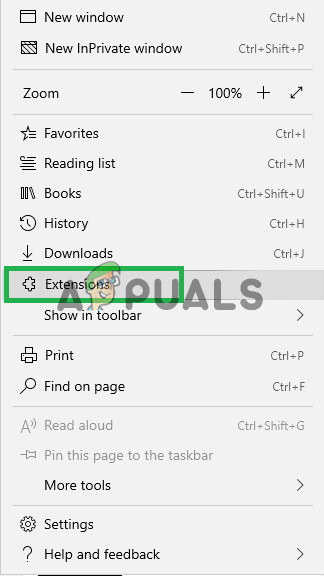
Clicking on Extensions. - Select all the extensions one by one and click on disable.
Note: If you are using any other browser then you can look for the method on your browser’s support site.
Solution 3: Closing Other Software.
In some cases, certain software on your computer can interfere with the browser and cause issues in loading certain websites thus causing issues with the loading of the Google Docs site. Therefore, make sure that no other software is running while you try to open the site. You can also try to run the Antivirus and try to remove malware that might be running on your computer and is stopping you from connecting to the site.
Solution 4: Switching Browser.
Sometimes, a certain browser might be facing issues connecting to the site due to any bug with the browser. Also, the site might be experiencing trouble loading on a specific browser. Therefore, you can try to load the site on a different browser and check to see if that helps in getting rid of the issue.
Solution 5 Granting Access in Firewall.
It is also possible that the Windows firewall might be interfering with your browser and preventing it from connecting to certain websites. Therefore, in this step, we are going to grant our browser access to the Windows firewall.
- Click on the start menu and select the “Settings” icon.
- Click on “Update & Security“.
- Select the “Windows Security” option from the left pane.
- Click on the “Firewall & network protection” option.
- Select the “Allow an app through Firewall” option.
- Click on “Change Settings” and make sure that your browser is allowed through both “public” and “private” networks.
- Click on “OK” to save your settings.
- Try to connect to the site and check to see if the problem persists.
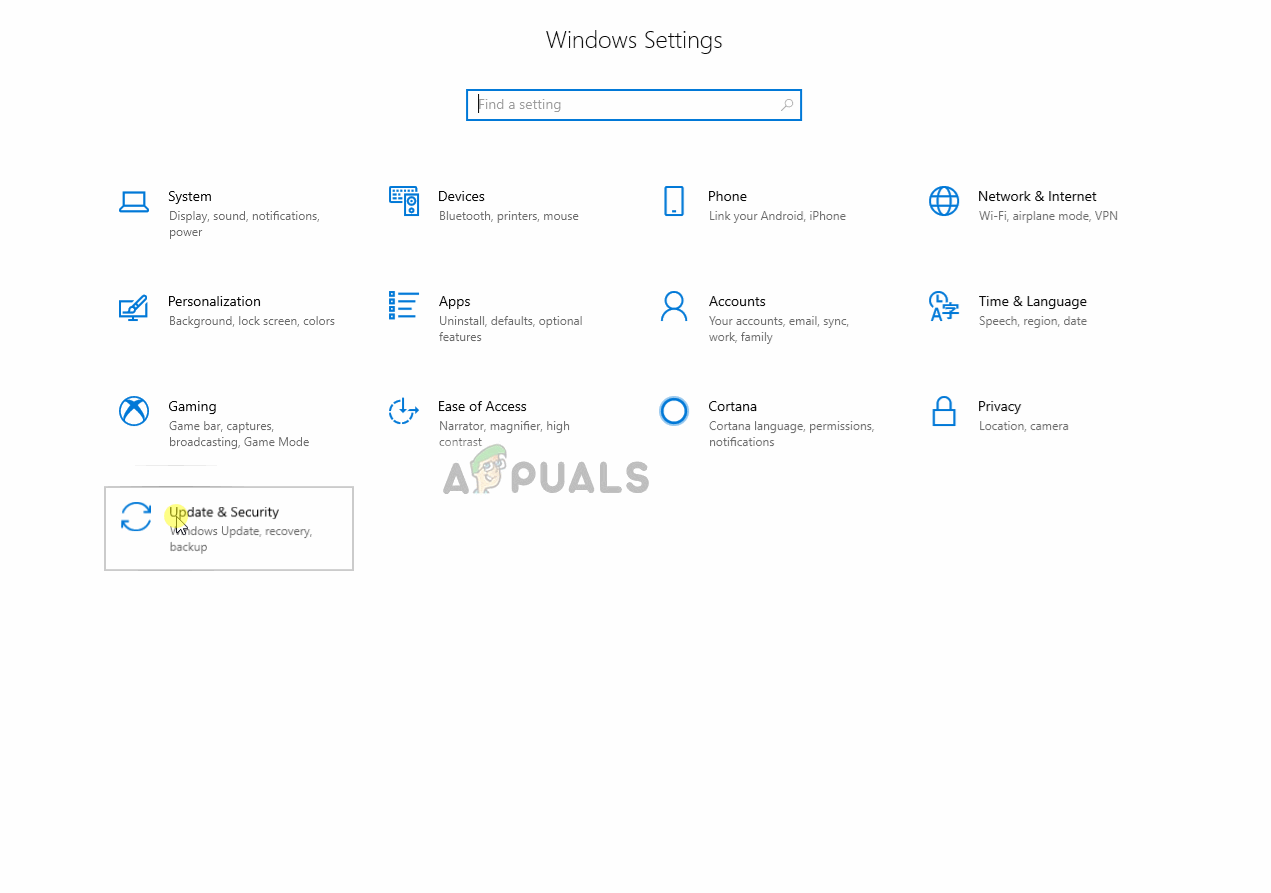
The process of allowing browser through the firewall





